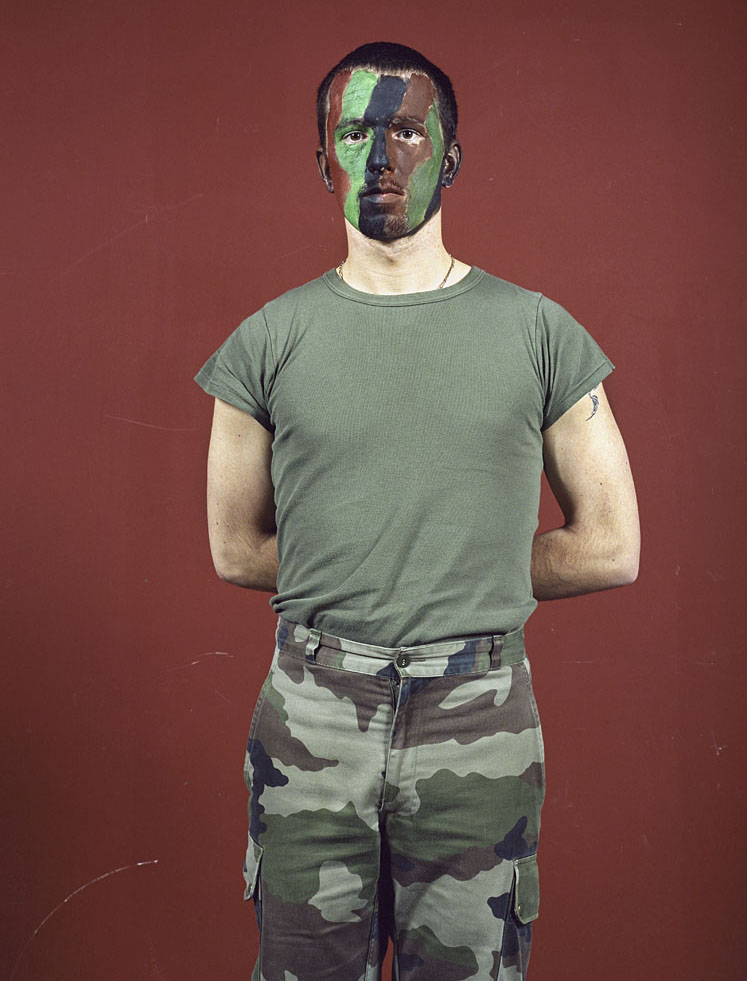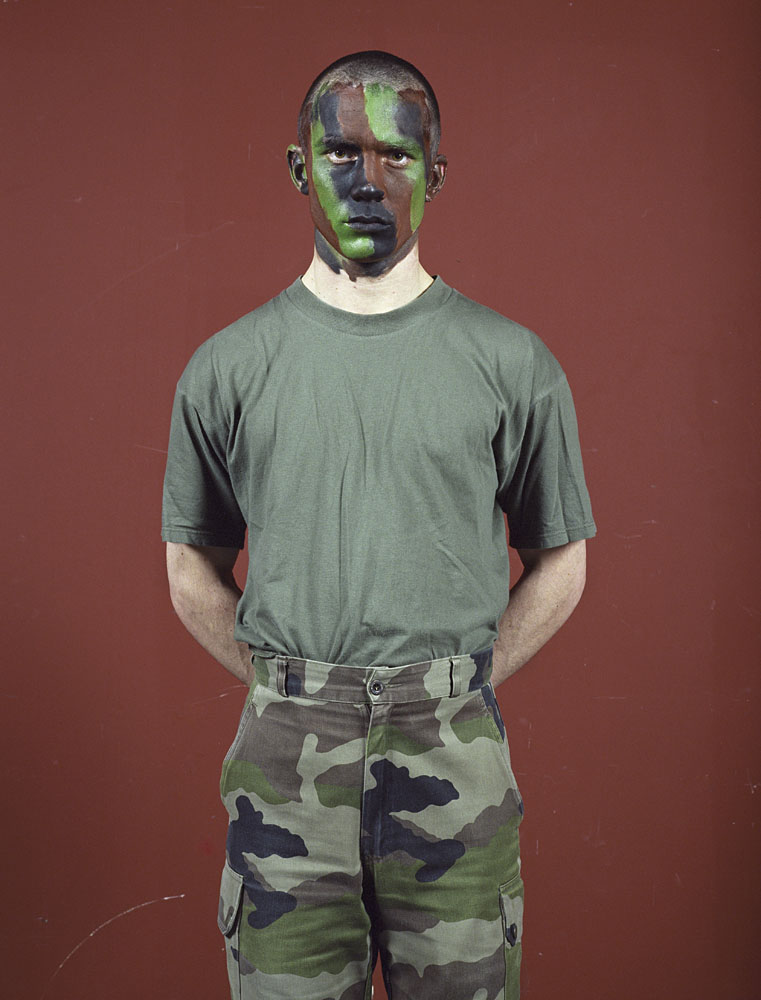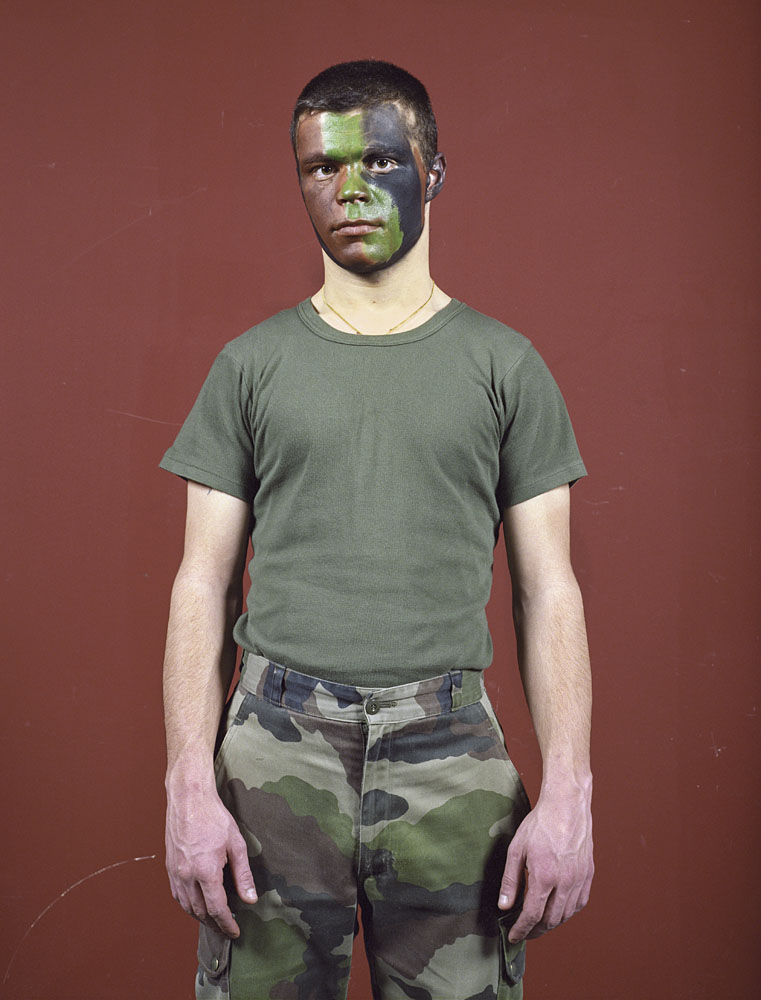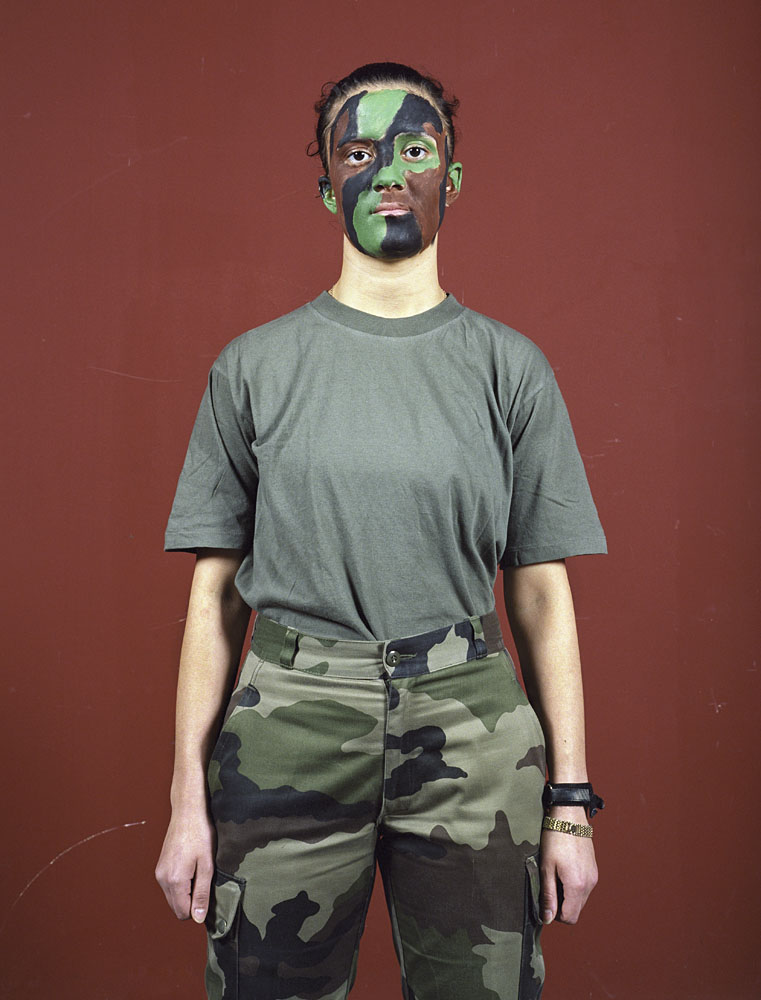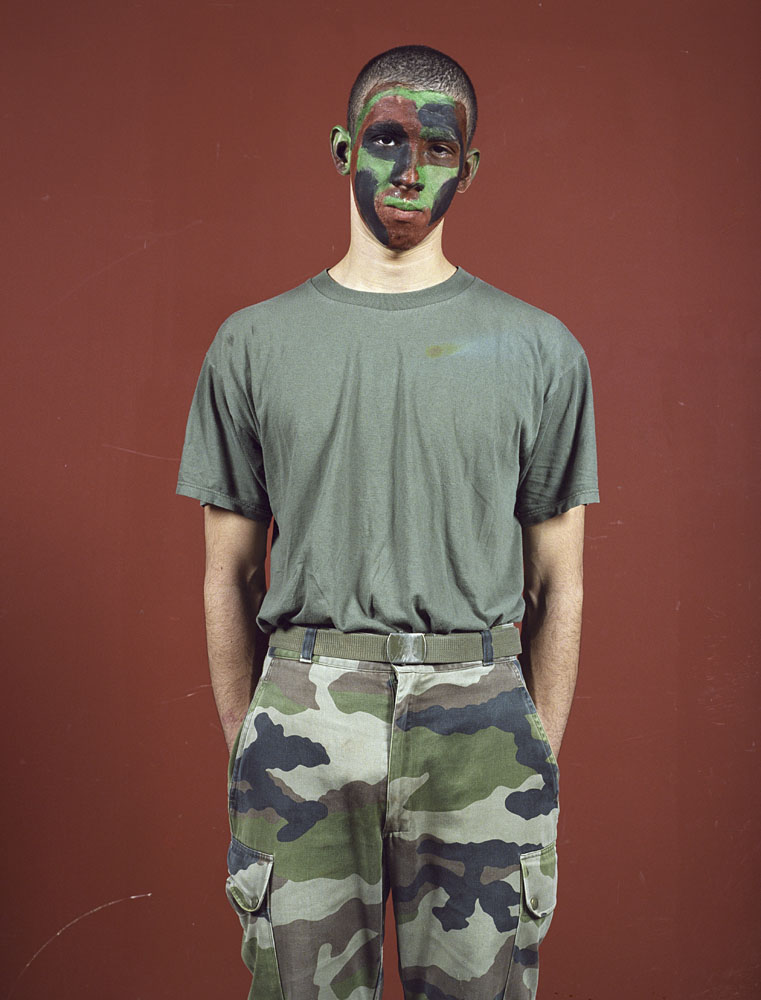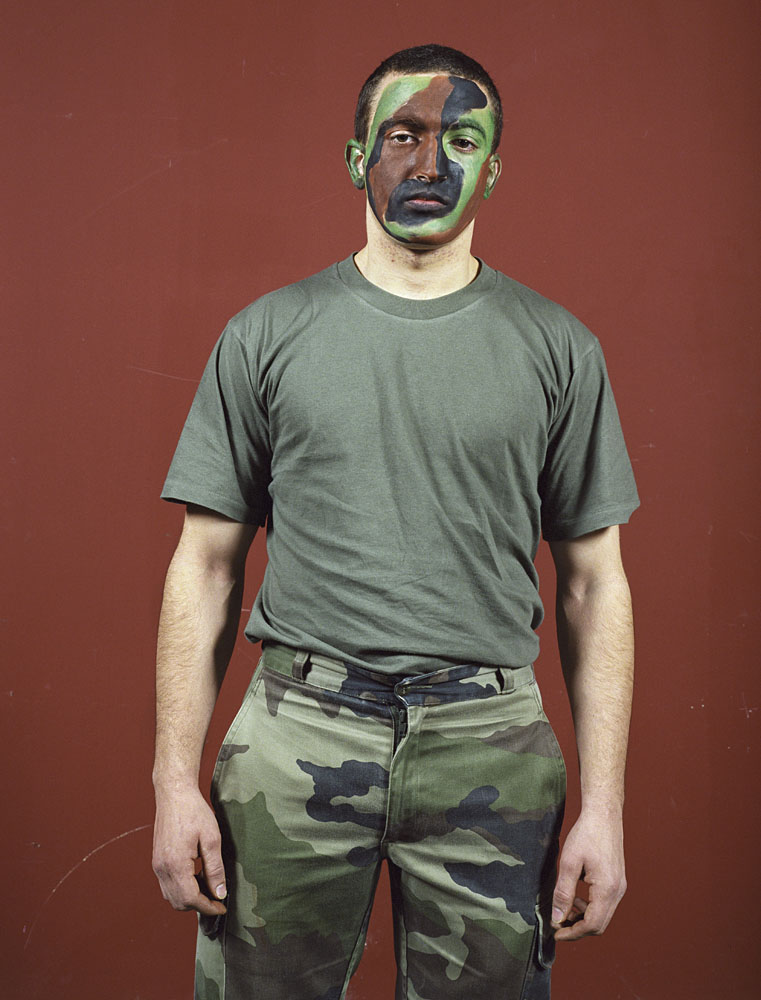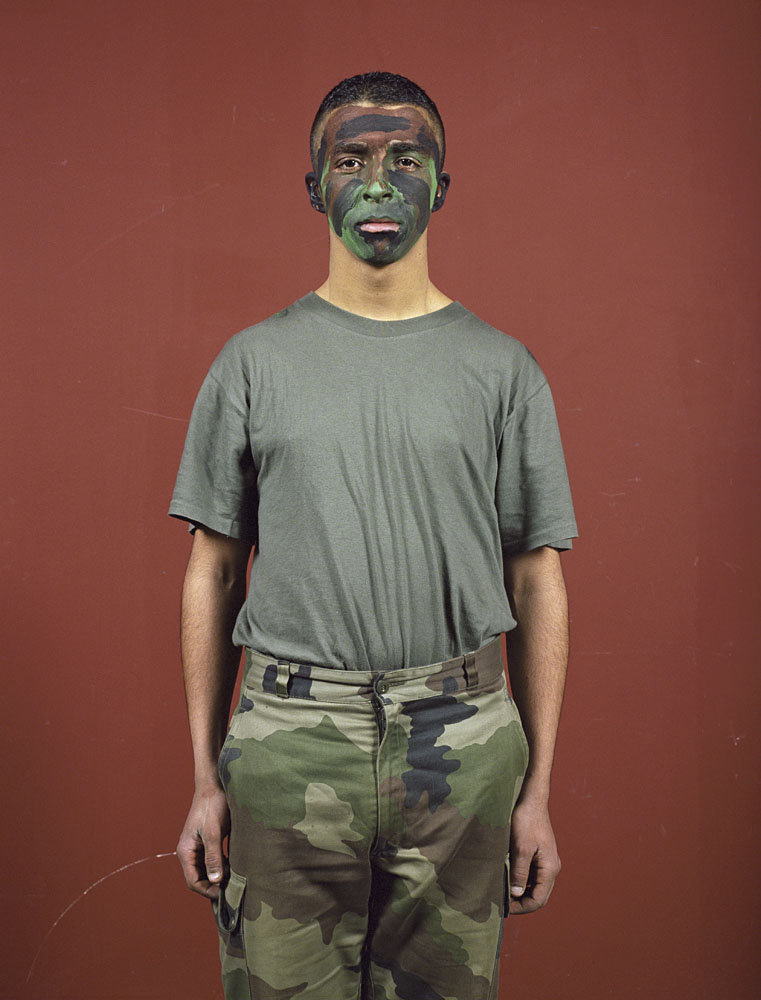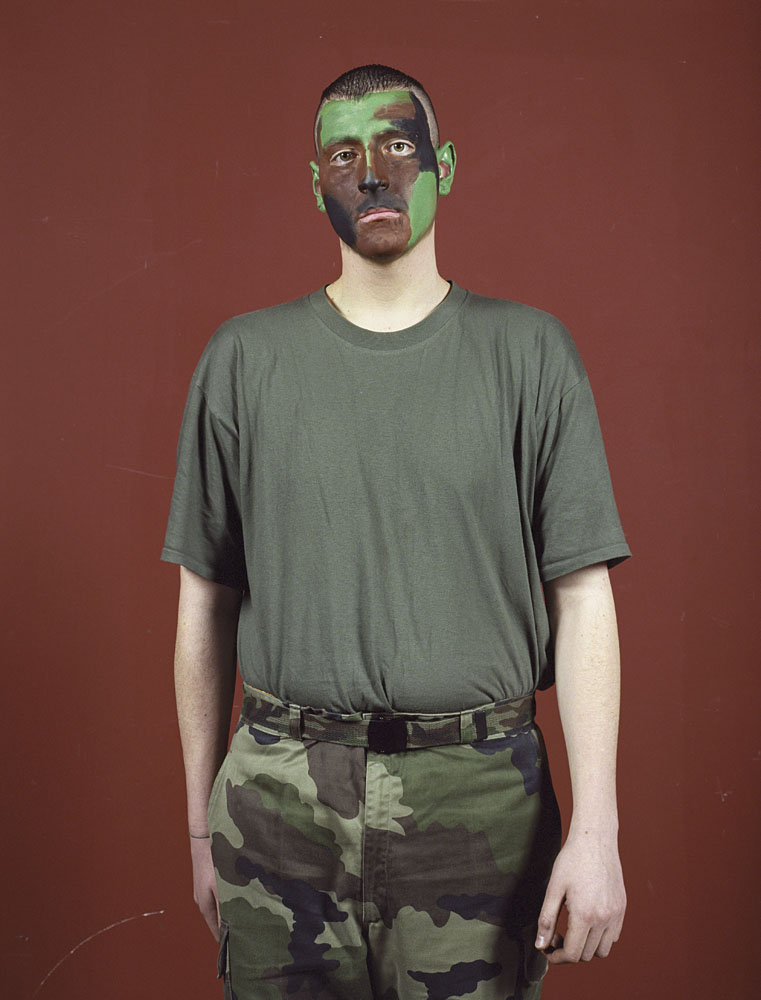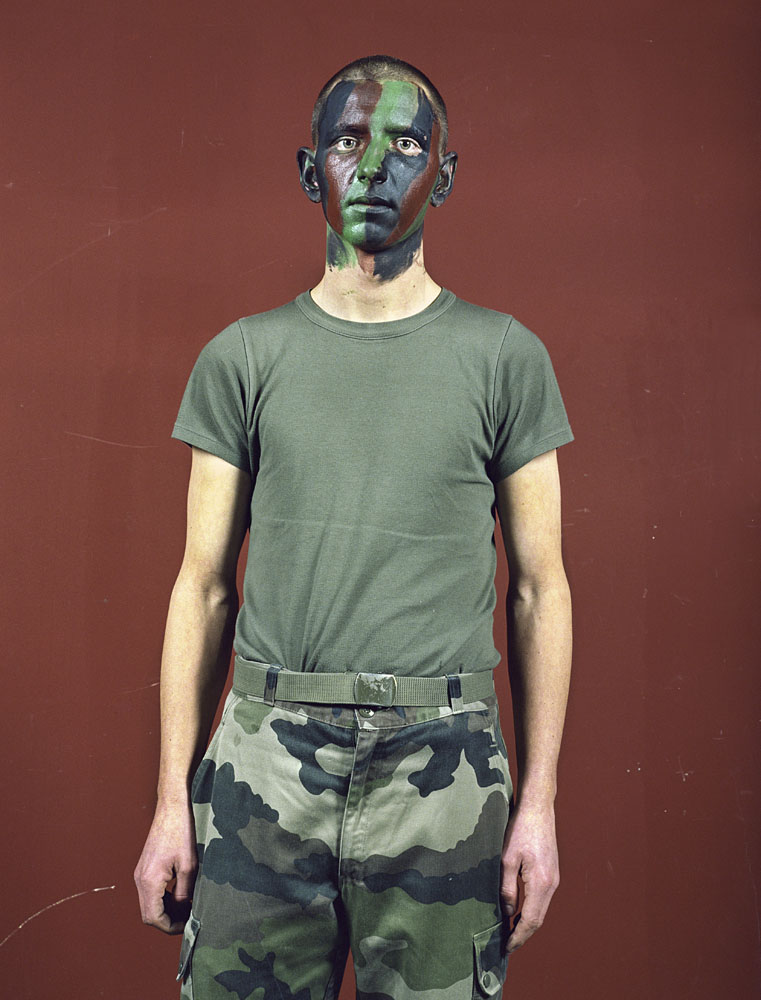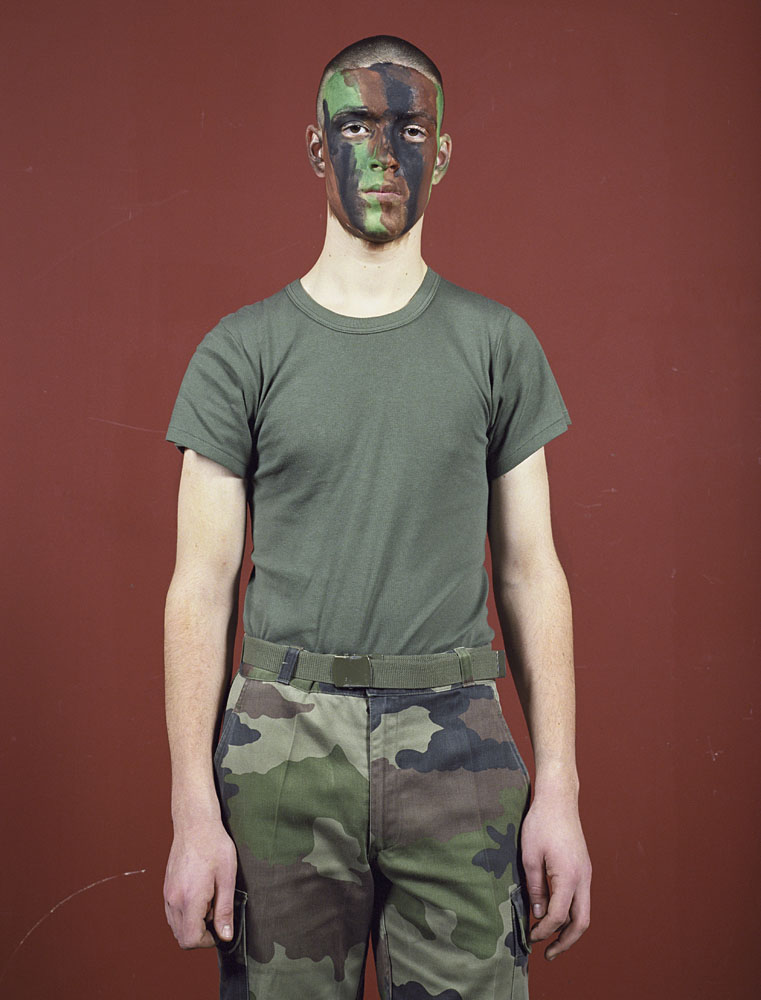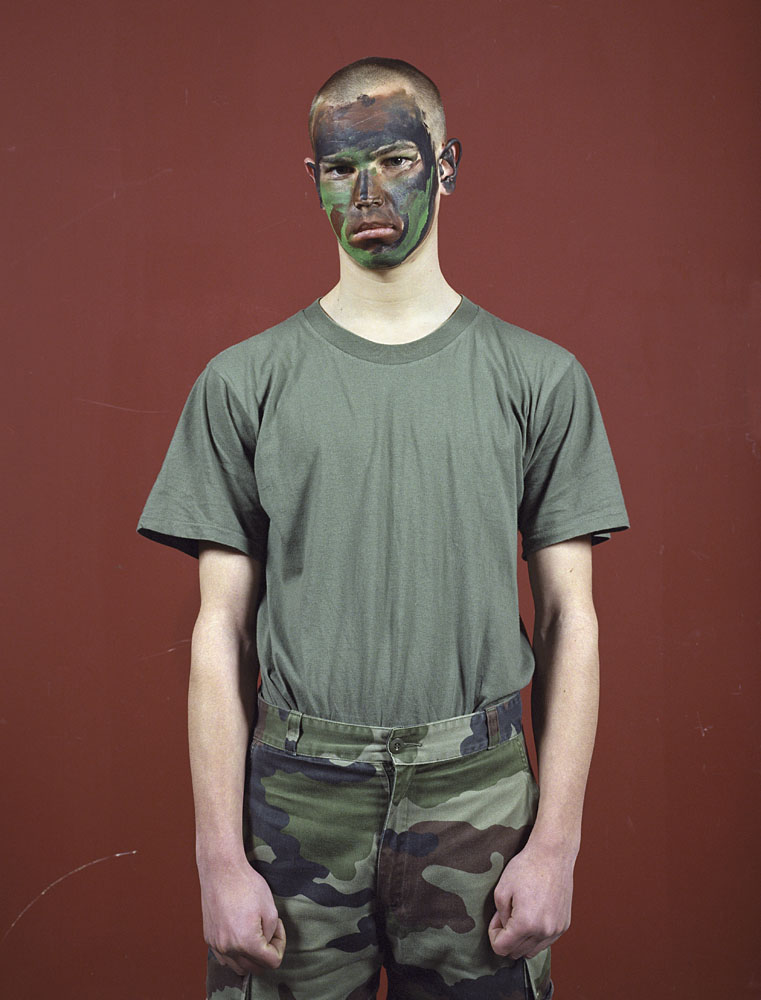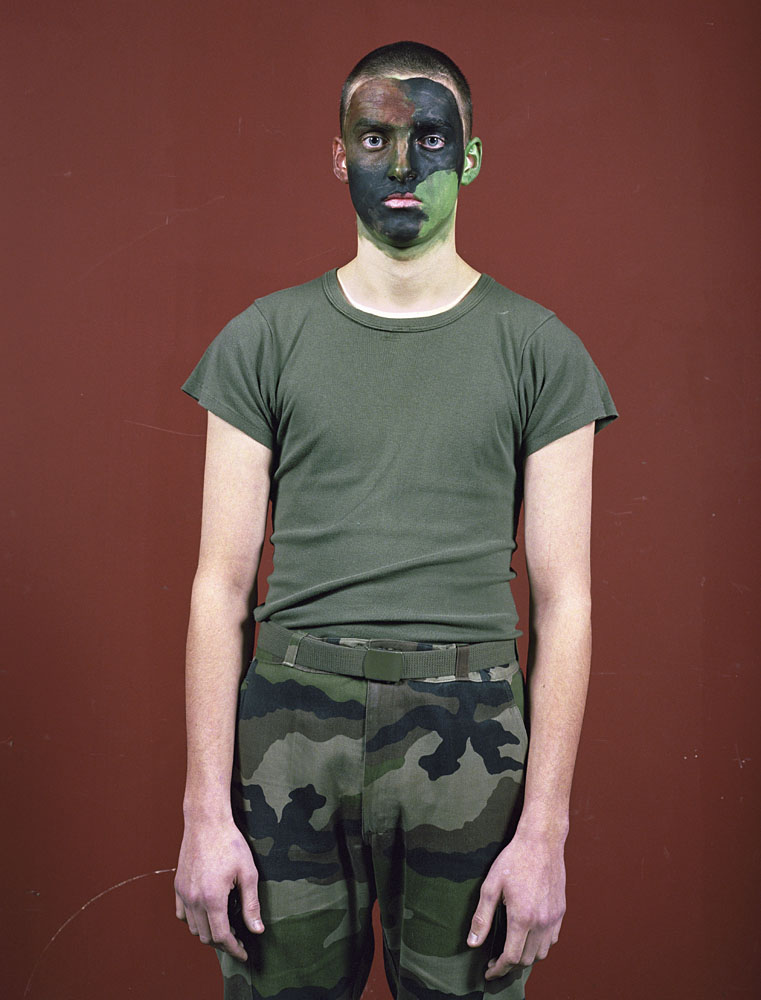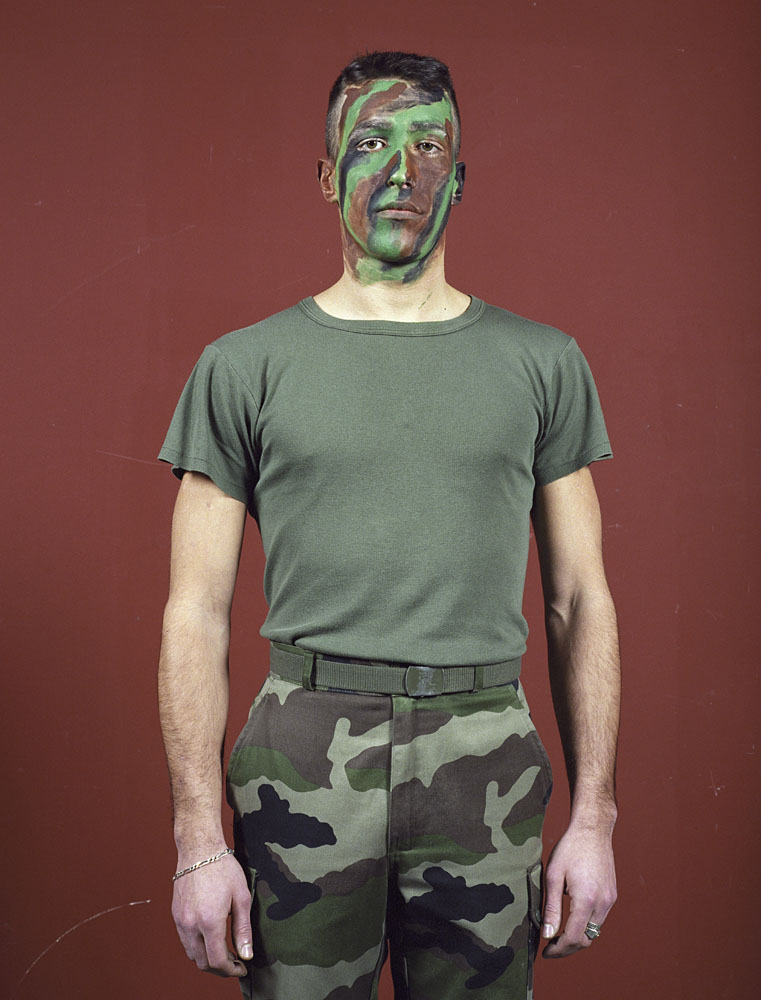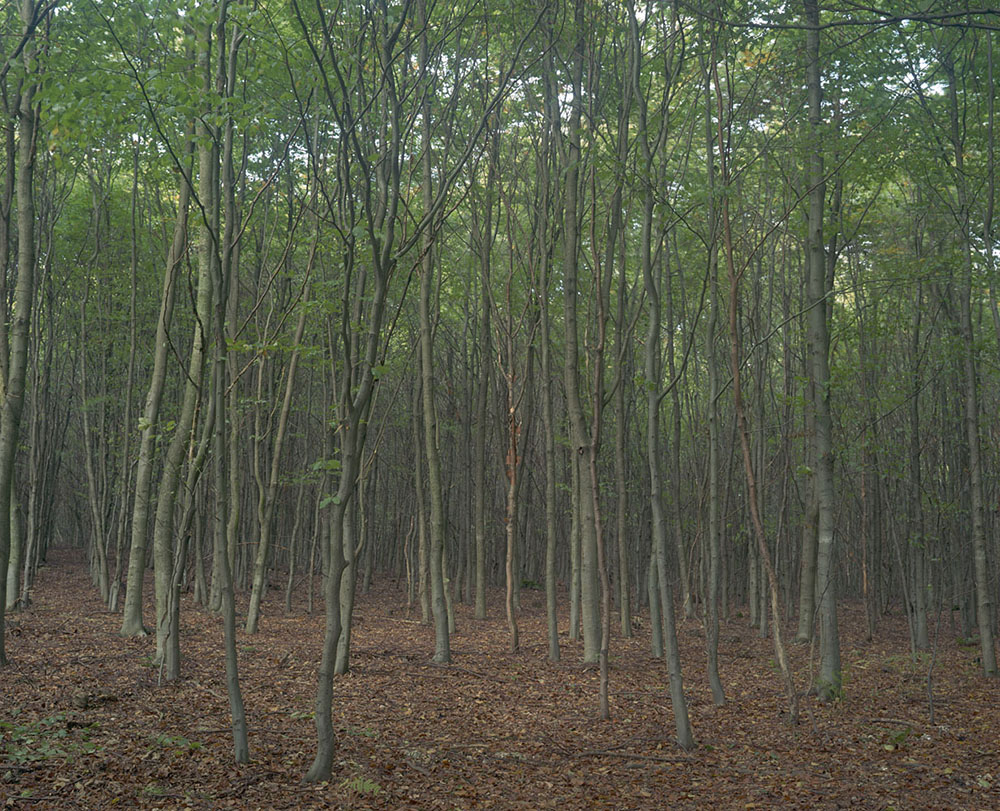In Camouflages, the uniform is on the skin. It is a series of painted faces of male and female soldiers from the Marine Artillery Regiment stationed near Rennes in Brittany, France. Another photograph serves as a commentary: a landscape of crowded tree trunks, standing in ranks – so close to each other that their outlines and contours are completely blurred. All of these American foreground portraits feature the same standard issue, camouflage pants with a khaki T-shirt. The men and the one woman nearly all pose, thumbs along the seams of their trousers, in front of a maroon background. Their facial features are hidden by the layer of make-up, making them impossible to distinguish. In their place, green black and brown lines have been drawn and suddenly these serve to proclaim the camouflaged identity. Using coloured parallel stripes, concentric semicircles and random spots, each one of them in their own way has expressed their ‘nature’. As he did in Water-polo and Pattes blanches Charles Fréger has, above all, used light in the composition of these pictures – light on the skin, light on the pigments of the make-up, and an interplay of matter and colours. This is a silent series; only the surfaces speak.
